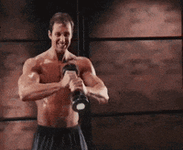One thing I would like to extrapolate in this. Do you think that the adaptation from 5x5 pryamid max squat lifts can be transferred into long duration rucking? No doubt you gain some strength from it but it does not strike me as the most direct or effective training regime if the desired transition is a slow twitch, long duration, muscle endurance activity. Instead, ive always thought the squat was more directed towards fast twitch, explosive events like sprinting, jumping etc… id like your honest response here as I do not mean to offend but I disagree with you that the lunge has less(sounds like none in your opinion?) utility than the squat? I personally love the lunge movement-weighted step ups step downs, weighted walking lunges, side lunges etc and I think that it serves the mountain hunter quite effectively in the gym and leads to a more efficient transition to rucking strength than say the squat. Just by virtue of the fact that the lunge is itself a walking movement would mean that the muscles are taught that direction and synergy better than a squat.
On top of that I do not think the science supports high intensity, fast twitch work to pay off for a desired low intensity slow twitch outcome.
For a mountain hunter to succeed day after day for an entire season, he must build a cardio base that supports long duration zone 2-3 events and muscle that supports long duration strength events. Rucking up and down mountains. Pack outs. The way you train in the gym for this best is with movement patterns that mimic rucking and with muscle endurance designed sets. Not with hypertrophy and pure strength style sets. Then, if you have the ability, you should try to specialize training with just plain old rucking in the type of terrain you hunt in.
The squat is generally not a "fast" movement. You can perform it in a more explosive manner than a conventional squat and certainly there is benefit to having the fast twitch muscle fiber genetics in relation to squatting at a high level, but you're not going to do a whole lot to train the actual fast twitch muscle fibers with the squat. In fact, there isn't a whole lot a trainee can do to develop fast twitch muscle fibers significantly beyond their genetic positioning. For example, there is data that supports the conclusion that a trainee can only add about 20% to their standing vertical jump through training. That's not insignificant, but, if you consider a high school athlete with a 20 inch SVJ can, at best, only add ~4 inches to that SJV through training, a squat will never put them on par with the athlete who has a 32 inch SJV out of the gate. So, no, I would not suggest that the lunge is more effective at training slow twitch muscle fbers than the squat.
What you seem to be suggesting, and this is a super common conclusion out there in the world, is that strength is a specific adaptation and therefore there the more your strength training looks like your sport, the more sport specific strength a trainee will develop. i.e. "lunges look more like hiking therefore they are better"
Unfortunately, this just is not the case as
strength is much more of a general adaptation than a specific adaptation. With that in mind, the squat is more effective at making a trainee stronger than the submaximal variant the lunge is, so,
if the goal is to be stronger, the squat is more effective. Where the specific adaptation takes place is practicing/training your sport. In our case, this is muscular endurance developed through rucking is there isn no more effective training for rucking than rucking. The quad's only job is to extend the knee. The glute's only job is to keep you upright. These muscles do not know what larger task they are performing, they just perform these simple tasks as instructed by the brain -your quad does not know or care that you are performing a squat, a lunge or a ruck, pedaling a bike, or standing up from the toilet -its just going to extend the knee.
Another common suggestion is "stabilizer muscles". I think this component is incredibly over exaggerated. Sure, you can emphasize some individual muscle a bit more with lunges vs squats, but consider this: Are these "stabilizer muscles" getting more work from a heavier load of the squat or the lighter load of the lunge? Take a trainee with a relatively modest 250 lbs squat. How much would he be working with on a lunge? 135 lbs at best? (Probably lighter as I seldom see people lunging with more than 135 lbs). So, our trainee can place 250 lbs of stress on their body or they can perform lunges with 60% less weight. Are these "stabilizer muscles" getting more stress from ~60% more weight on the body or slightly more isolated but much lighter weight? If we were (best case) to call this stress equal, then would the trainee not benefit from the overall more systematic stress of the squat?
Since strength is a general adaptation, it need not look more like any specific sport to be effective. If your sport requires strong quads, strong hips, strong posterior chain,
then training these muscle groups in the most effective manner to get stronger is the most effective strength training. Furthermore, since most of us are not professional athletes, our training is just as geared towards day to day life and longevity as it is towards performance in the mountains. You don't need to be particularly strong to be a great mountain athlete, but you certainly benefit from not hurting your back moving the couch or picking up the grandkids or retaining the ability to stand up from the toilet unassisted as you age. These aspects and the additional benefits of maintaining bone density as you age are going to be more important for the general population than being marginally more efficient for what amounts to a hobby.
So, yes, I contend that the squat is more effective for developing strength than the subordinate accessory lift known as the lunge. I'll further contend that being stronger vs. weaker sets a trainee up better to develop sport specific muscular endurance. Is there a tipping point where strength will offer diminishing returns? Of course. Are most people who are living a very active lifestyle, taking vacations, sleeping 5 or 6 hours a night, working 40 hours a week, raising families, mowing the grass, eating marginally well in danger of exceeding this tipping point? No. not even close.
And even if they do, this is just a hobby, so does it really even matter? I'd rather be a little too strong than a little too weak.


